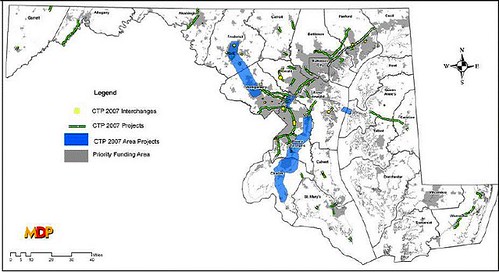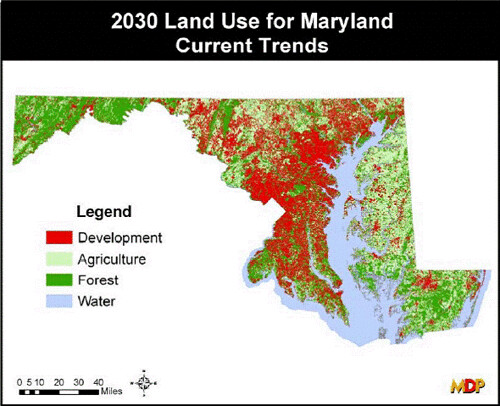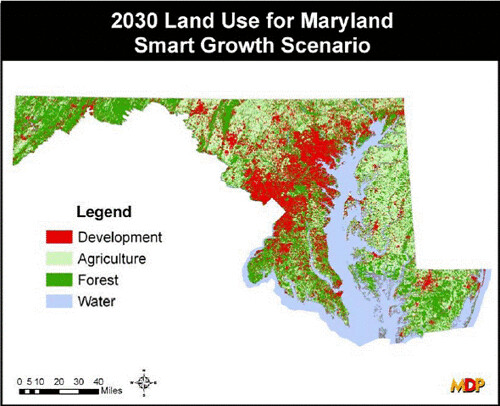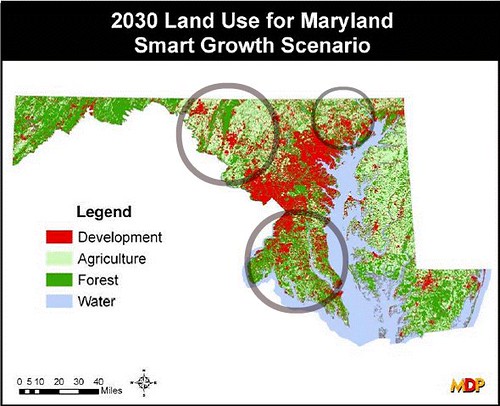How to save save half a million acres in Maryland and set an example for elsewhere

Posted January 21, 2010 at 1:24PM
Take a look at this series of maps. All are of the state of Maryland. In the first, ignore the blue and green streaks and concentrate on the gray-shaded portions. Those are designated growth areas, called “priority funding areas” in Maryland because they qualify for state infrastructure funding to support development. They are designated by local government and mostly comprise cities, suburbs, towns and immediately adjacent areas.

Ideally, this is where all new growth in the state would occur but, in reality, development is not prohibited outside the PFAs. Sprawl is allowed to occur outside those zones if the infrastructure is developer-funded and, although there has been quite a bit of concentrated development within PFAs, subdivisions have continued to spread across the Maryland landscape with very little restraint.
The second map shows this vividly. The areas in red are the parts of the state that will be covered with development in 20 years under current trends:

The third map shows the areas that would be covered if the state implemented a modest set of smart growth controls:
- 80% of future growth is directed to Priority Funding Areas (PFAs).
- Allowable density inside PFAs is at least 4 dwelling units per acre.
- Allowable density outside PFAs is 1 dwelling unit per 20 acres or less dense.

Under current trends, 650,000 new acres of currently rural land will be converted to development by 2030. Under the smart growth scenario, only 150,000 new acres would be developed by 2030, for a net saving of 500,000 acres.
In the final map, I have circled the areas where the benefits of the smart growth scenario would be particularly dramatic:

Maryland has a decent (and, at the time of its enactment, innovative) framework of smart growth laws that has facilitated a lot of good development and conservation. But the laws need to be strengthened. All of the maps and projections are from the Maryland Department of Planning’s Growth and Land Use Trends, where you can read more about them and their context. There is also a nice discussion of all of the above by David Daddio on the blog TheCityFixDC.